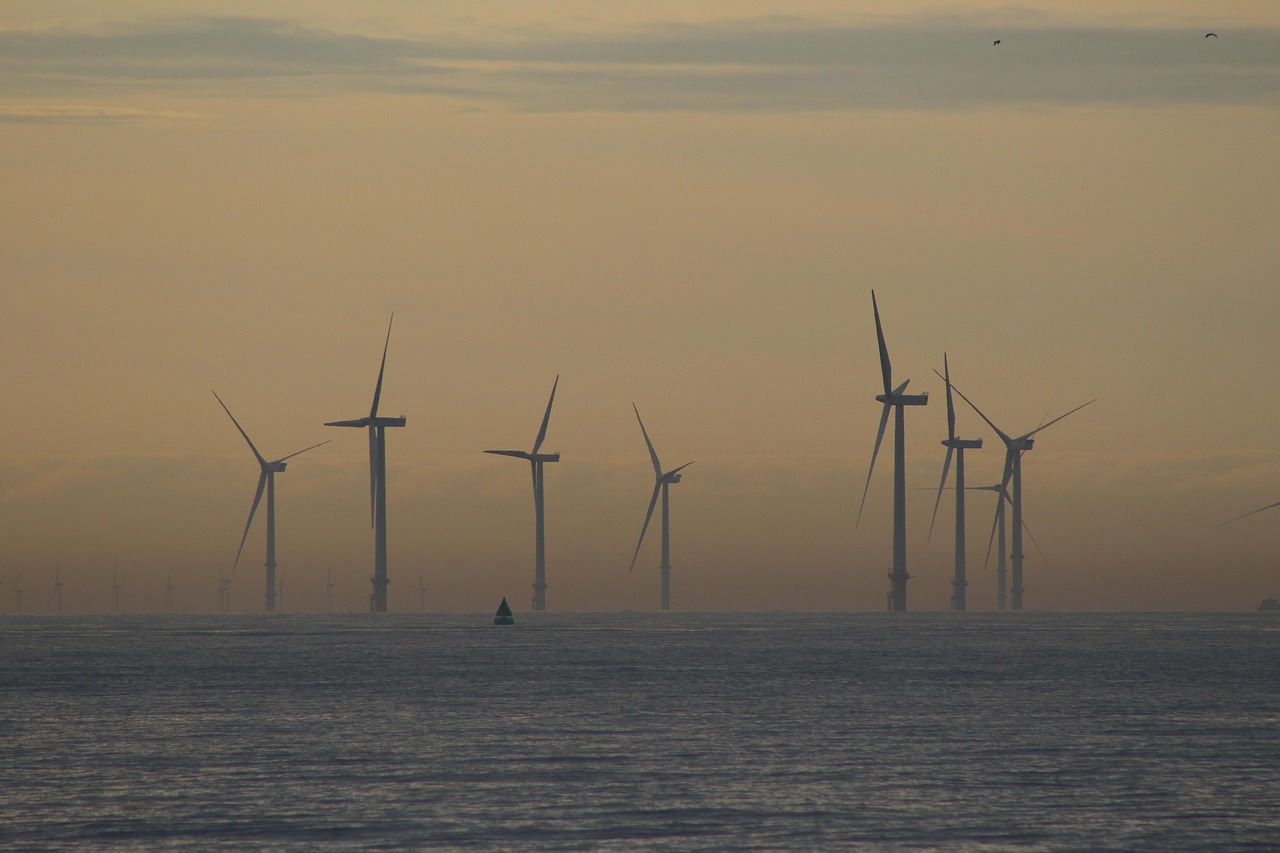
Wind and ocean wave energy are among renewable portfolios' most common secondary energies. Solar power is derived from the sun, while other types of power are drawn from the sea and air. However, as the demand grows, so must ocean wave electric generators and wind turbine capacities. Fortunately, nanotechnology makes combining these sources easier for a more reliable hybrid solution.
Like oscillating water columns and point absorbers, sea wave generators harness ocean currents' surface motions, converting the kinetic and potential energy into electricity. Conversely, wind turbines capture wind's kinetic energy, turning it into mechanical power for electricity.
In 2023, the U.S. Department of Energy recognized wind power as one of the fastest-growing and most affordable renewable energies in the U.S., accounting for 22% of new electricity capacity in 2022. In fact, wind energy creates enough electricity for 43 million homes and has driven economic growth within the wind energy workforce.
Despite these milestones, ocean wave energy and wind power have room for improvement. Nanotechnology, in particular, has increased system efficiency and performance. For example, one study suggests merging nanomaterials with turbines to catch inadequacies in wind farms using artificial intelligence. It can also improve sensors and data collection capabilities to enhance wind forecasting, making wind farms more reliable.
Meanwhile, the Pacific Northwest National Laboratory is deploying micro-energy technology to develop a frequency-multiplied cylindrical triboelectric nanogenerator (TENG). This nanogenerator converts slow ocean currents into power by creating static electricity through friction. As a lightweight and affordable tool, the TENG device could be critical in operating sensors and communication systems where power is unavailable in desolate ocean regions.
Countries worldwide are turning to renewable energy for power generation. Iceland operates 100% on geothermal power and hydropower. Meanwhile, Denmark derives most of its electricity from wind power through its 4,800 wind turbines — agricultural-based biomass is the nation's second-largest contributor.
Not many countries run on just one renewable energy source except a few. This is usually due to intermittency issues. For example, wind energy fluctuates depending on speed, air density, location, turbine design and frequency changes. This means wind farms cannot control the amount of electricity generated on any given day. A common remedy is a hybrid wind system, such as merging it with solar power.
Likewise, although ocean wave electric generators have fewer intermittency disruptions, varying wave heights, speeds and patterns are unpredictable and could make electricity difficult to produce consistently. Overall, a wave and wind hybrid energy system helps to resolve these problems and paves the way for a stable power supply.
Using nanotechnology in combined energy systems is vital for ramping up renewable power generation and transitioning to a reliable, diesel-free energy infrastructure. Here's why this innovation works to merge ocean waves and wind energy.
Nanotechnology has enabled greater efficiency and designs for energy conversion. Different nanogenerators boost yields for continuous power generation even if one source experiences disruptions.
Nanomaterials also allow for more compact and lightweight equipment, which proves especially vital in marine areas. Engineers can more easily install nanotechnology on existing infrastructure — including wind turbines and buoyant surfaces — without extensive alterations.
There's a reason diesel-powered generators are a preferred choice for many businesses, mainly because of their affordability and efficiency. These generators are readily available and can store diesel for long periods. They can also operate for 12,000 to 30,000 hours before needing maintenance, making them reliable for generating power.
However, with proper care, hybrid wind and ocean wave energy systems are equally durable and produce cleaner electricity. When enhanced with nanotechnology, hybrid renewable energy solutions present an opportunity for a more sustainable future. Nano-optimized sensors help with this by delivering real-time insights about various conditions and predictive maintenance needs, allowing engineers to stay ahead of equipment failures and reduce downtime.
Nanotechnology components increase wind and sea wave generators' ability to capture and convert power. The lightweight materials enhance turbine performance and wave energy devices. For example, nanomaterials can be applied to turbine blade coatings to reduce ice formation and improve aerodynamics.
With each new renewable energy source comes a growing need for better storage solutions. Fortunately, micro-energy technology helps advance the development of batteries and supercapacitors in hybrid systems.
In batteries, nanoparticles increase charging speeds and energy capacity for longer-lasting charges. Likewise, they help extend supercapacitor life spans and rapid power distribution. These storage technologies are crucial for preserving excess electricity during low production periods and guaranteeing availability and reliability.
Nanotechnology's Role in Future Hybrid Energy Systems
Micro-energy technologies will continue transforming hybrid renewable systems in the coming years. Already, TENG devices have proven their versatility and cost-effectiveness, while other nanogenerators have the advantage of being lightweight and consolidated. However, there's still a need to address how these tools are affected by varying environmental conditions and the need for external power supplies.
Future trends in using nanotechnology for combined ocean wave electric and wind power production must overcome the difficulty of coordinating multiple energy sources simultaneously. According to one study, customizations and downsizing must improve to meet varied offshore power needs, while varied conversion processes can help enhance generation efficiency. Experts predict these shortcomings will guide new research in energy management.
Some challenges and limitations exist in deploying nanotechnology in hybrid wind and wave energy, such as the following:
Nanotechnology will help broaden and increase the pace of clean energy innovation for a more sustainable, reliable electricity supply. The world will only benefit from progress made in micro-energy mechanisms, making renewable adoption all the more possible on a greater scale.

